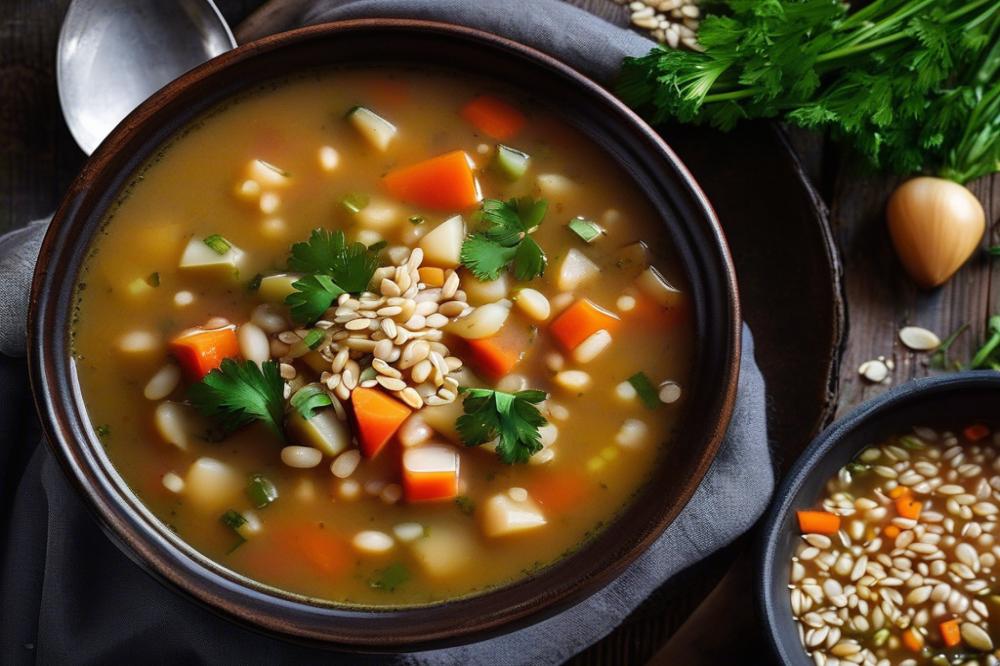Introduction
Ensopado de Enguias is a flavorful Eel Stew that showcases the vibrant essence of Portuguese cuisine. This dish has deep roots in the country’s culinary traditions, particularly in the Ribatejo region. Known for its rivers and rich landscapes, Ribatejo offers a unique environment for producing various fish dishes, especially those featuring river eels.
The significance of eel recipes in Portuguese cooking is profound. Eels are not only plentiful in the region’s waterways, but they also represent a link to local history and culture. Traditional dishes made with eel have been passed down through generations, preserving the culinary heritage that makes Ribatejo special.
Throughout the years, the people of this region have developed their own distinct specialties. The preparation methods and ingredients might vary, but stews remain a fundamental part of their gastronomic identity. With each family having their own recipe, Ensopado de Enguias stands out as a beloved classic that captures the heart of Ribatejo’s rich traditions.
Ensopado de Enguias: The Dish Explained

Ensopado de Enguias is a traditional Eel Stew that showcases the flavors of the Ribatejo region. This dish typically features fresh river eels, which are well-seasoned and cooked in a rich, savory sauce. The broth often includes ingredients like tomatoes, garlic, and onion. Spices, such as paprika and coriander, contribute to its distinct taste. Diners can expect a blend of earthy and sweet flavors, making each bite a delightful experience.
Cultural context is essential when discussing this dish within Ribatejo gastronomy. In this region, meals often celebrate local ingredients and traditional cooking methods. The stew highlights not only the culinary skills passed down through generations but also the importance of river eels in everyday cooking. Eels are more than just an ingredient; they represent a connection to the land and its resources.
River eels have a significant role in local fishing traditions. Fishermen gather these creatures from the area’s rivers, using techniques that have been practiced for centuries. The practice of catching eels often involves a communal effort, where families and friends come together to share knowledge and skills. This fosters a sense of community that goes beyond just food. In Ribatejo, eel recipes are not only about sustenance; they symbolize a way of life. Traditional dishes like Ensopado de Enguias honor the region’s rich culinary heritage and emphasize the value of sustainable fishing practices.
Many families have their unique twist on this dish. Some prefer a spicier version, while others may add different vegetables. These variations reflect personal tastes and regional specialties. Nevertheless, the original recipe remains a beloved staple in Ribatejo’s fish dishes, celebrated by both locals and visitors alike. Ensopado de Enguias carries memories and stories, each bowl containing a blend of flavors and history.
Ingredients and Cooking Instructions

List of Ingredients with Quantities
To create a delightful eel stew from the Ribatejo region, gather the following ingredients:
- 1.5 kg of fresh river eels
- 2 medium onions, finely chopped
- 3 cloves of garlic, minced
- 1 red bell pepper, diced
- 2 large tomatoes, chopped
- 1 cup of white wine
- 500 ml of fish stock
- 2 bay leaves
- 1 teaspoon of paprika
- Salt and pepper, to taste
- Fresh parsley, for garnish
Instructions for Preparing the Stew
Start by cleaning the eels properly. Make sure to remove the skin and cut them into manageable pieces. In a large pot, heat a bit of olive oil over medium heat. Add the chopped onions and sauté until they become translucent. Following this, toss in the minced garlic and diced bell pepper, cooking until soft.
Next, blend in the chopped tomatoes and allow the mixture to simmer for several minutes. This step will help the flavors develop. Once the tomatoes lose their shape, pour in the white wine. Scrape the bottom of the pot to incorporate any flavorful bits stuck to it.
Afterward, add the fish stock along with bay leaves and paprika. Bring this to a gentle boil, then reduce the heat. Introduce the eel pieces to the pot, ensuring they are covered by the liquid. Let the stew simmer for about 30 minutes, or until the eel is tender. Adjust the salt and pepper to suit your taste.
For serving, ladle the stew into bowls and sprinkle with fresh parsley. Enjoy it with crusty bread to soak up the rich broth.
Tips for Ensuring the Best Flavor and Texture
Using fresh river eels is crucial for optimal flavor. They should be firm and smell clean, resembling the fresh scent of the river. Brown the eel slightly in the beginning for more depth of flavor. This enhances the aroma of the dish.
Don’t skimp on the aromatics, such as onions and garlic. They build the foundation of the stew’s taste. Allow enough time for simmering; this helps blend all the ingredients well. If available, a touch of smoked paprika can add an interesting twist.
Serve the stew hot, and it’s best enjoyed right after cooking. For a heartier version, consider adding potatoes or chickpeas.
Nutritional Information for Each Ingredient Analysis
Understanding the nutritional value of each component can enhance your appreciation for this traditional dish. Eel is a good source of protein, providing essential amino acids and omega-3 fatty acids, which are beneficial for heart health. Onions possess antioxidants that can help reduce inflammation.
Garlic is known for its immune-boosting properties. The inclusion of bell peppers adds vitamin C, while tomatoes contribute lycopene and vitamins A and K. White wine, when used in moderation, can offer some antioxidants as well. Lastly, parsley provides additional vitamins and is a great source of fiber, enhancing the overall health profile of the stew.
Variations and Regional Influences

Across Portugal, the recipe for eel stew varies significantly, reflecting local customs and available ingredients. In the Ribatejo region, the dish often highlights river eels caught nearby. This regional specialty makes the stew a favorite among locals who value fresh produce. Other areas, however, might use different types of eels or fish entirely.
In the north of Portugal, for instance, you might find eel recipes that incorporate spices and herbs not typically used in Ribatejo. These influence the overall flavor profiles, adding regional uniqueness to each dish. Comparatively, in coastal regions, fish dishes lean more heavily on seafood, such as cod, which creates a different culinary experience.
Local ingredients play a critical role in enhancing flavors in each area’s variation of traditional dishes. For example, Ribatejo’s fertile land produces fresh vegetables that complement the richness of the eels. On the other hand, coastal areas often include ingredients like saffron and heirloom tomatoes, borrowed from the rich maritime gastronomy of Portugal.
Many variations also depend on cooking techniques passed down through generations. Some families may choose to prepare the stew slowly, allowing the flavors to meld over time. Others might opt for a quicker method, making the dish accessible for everyday meals. Regardless of the approach, these preparations reflect distinct culinary heritage across regions.
Fishermen and home cooks alike adapt recipes based on personal preferences and seasonal availability. Often, families have their own secret ingredients or methods that they believe enhance the stew. This practice contributes to the diversity of eel dishes found throughout Portuguese cuisine, demonstrating how culinary creativity thrives in every region.
Culinary Heritage and Tradition

Ensopado de Enguias has deep roots in the Ribatejo region of Portugal. This eel stew offers a taste of the area’s cultural history. The river eels caught from the Tagus River serve as the main ingredient. Fishermen once relied on these fish for sustenance and income. Stories of their catch are woven into the local traditions.
In Ribatejo, traditional dishes often highlight the connection between people and their land. Recipes for eel stews have passed down through generations. Each family may have its own variation, but the essence remains the same. Furthermore, the preparation often involves simple methods, reflecting a rustic lifestyle. Time spent cooking together fosters community bonds.
Consuming traditional fish dishes like this stew reinforces local gastronomy. Residents take pride in their regional specialties. These meals represent the region’s identity and its agricultural heritage. Preserving such recipes helps maintain a cultural legacy. As modernization spreads, traditional cooking methods may risk fading from memory.
Local chefs continue to celebrate these eel recipes. They often experiment with flavors, while still paying homage to their roots. Ensuring that younger generations learn about this culinary heritage is crucial. It not only keeps the recipes alive but also connects people to their history. After all, food is more than just sustenance; it symbolizes community and shared experiences.
Serving Suggestions and Pairings
Ideas for Serving Ensopado de Enguias
Traditional presentation is important when serving this dish. A rustic bowl enhances the homey feel of Ribatejo cuisine. Serving with plenty of bread allows guests to soak up the rich broth. A choice of crusty Portuguese rolls or a simple white loaf works well. Adding a sprinkle of fresh parsley on top can brighten the dish.
Recommendations for Side Dishes and Beverages
Accompanying side dishes can elevate the experience. Choose roasted potatoes or a simple rice pilaf to complement the stew’s flavors. Steamed green vegetables, like green beans or broccoli, add a fresh touch. Paired beverages can enhance the meal significantly. A chilled white wine, such as Vinho Verde, pairs nicely, while a hearty red can also work. For non-alcoholic options, consider a flavorful gazpacho or lemonade.
How to Incorporate It into Festive Occasions
During gatherings, dishes from local gastronomy often take center stage. Consider serving eel stew at family reunions or holiday feasts. It embodies the culinary heritage of the region and invites conversation about traditional dishes. Preparing it in larger quantities ensures that everyone gets a taste. Highlighting regional specialties can spark interest in Portuguese cuisine. Sharing stories about its history can make the meal even more engaging. Include traditional music and cozy decorations to create a festive atmosphere.
Final Thoughts on Ensopado de Enguias
Ensopado de Enguias is more than just a dish; it symbolizes the cultural tapestry of the Ribatejo region. Flavors meld together, creating a complex yet harmonious stew that tells the story of local traditions and the importance of fishing in this area. The unique combination of spices and ingredients reflects the rich agricultural and aquatic heritage of Portugal. Each bite transports you to the riverside homes where this stew has been lovingly prepared for generations.
Trying your hand at making this dish at home can be a rewarding experience. Begin by gathering fresh ingredients to stay true to the authentic flavors. Follow the traditional cooking methods, and you may discover new techniques along the way. Sharing this stew with friends or family can turn a meal into a memorable occasion, filled with laughter and conversation. It offers an opportunity to connect with the deep cultural roots of Portuguese cuisine.
Regional specialties like this stew remind us of the significance of culinary diversity. Each locality has its own delicacies that showcase local history, customs, and ingredients. Thus, embracing these dishes creates a stronger appreciation for the cultural mosaic that defines a nation. The next time you savor a warm bowl of eel stew, consider its stories, flavors, and the community it represents.



